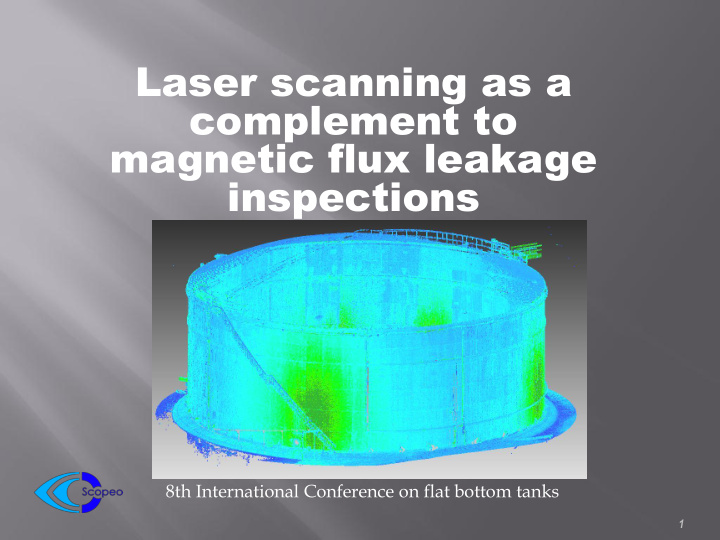



Laser scanning as a complement to magnetic flux leakage inspections 8th International Conference on flat bottom tanks 1
Introduction Since 1997 the storage tank operators and refineries have been inspecting tanks floors by Magnetic Flux Leakage method, and we have seen a lot of inspection companies use these system. This method has been a great innovation for the tank inspection. 2
Quick inspection for a large area. • Recognize by any code repair • Discriminate internal and external defects. • New maintenance practice • magnets sensor Plate 3
A important corrosion area top side plate. 4
Cylindrical pits less 15mm diameter 5
The volume loss of the metal for these both pits are similar 6
Plate curvature or bulges can prevent the sensor head from remaining in close proximity to the inspection surface. 7
False echo 8
These systems don't have to detect defects in welds 9
Following HSE Research Report 481, for the • inspection of storage tanks there needs to be a team of operators. This inspection team should consist of at least two individuals and possibly three. The roles required of the inspection team can be described as: • Team Leader (TL) • MFL Technician (MT) • Ultrasonic Technician (UT) 10
• Report all indications marked on the floor 11
Scanning by laser-scanner of tank floor : • 12
Defects measurements 13
We complete our inspection by a drawing: • 14
• The floor geometric deformations 15
• The annular geometric deformations 16
• The result of the planar tilt 17
• Out of verticality of the shell 18
• Out of roundness of the shell 19
• Dome roof inspection 20
• The beam Inspection 21
The scanner laser has to carry out: A complete inspection report of the bottom tank A complete geometrical analysis of tank A monitoring deformations in time 22
« Observe is our job » 23
Recommend
More recommend